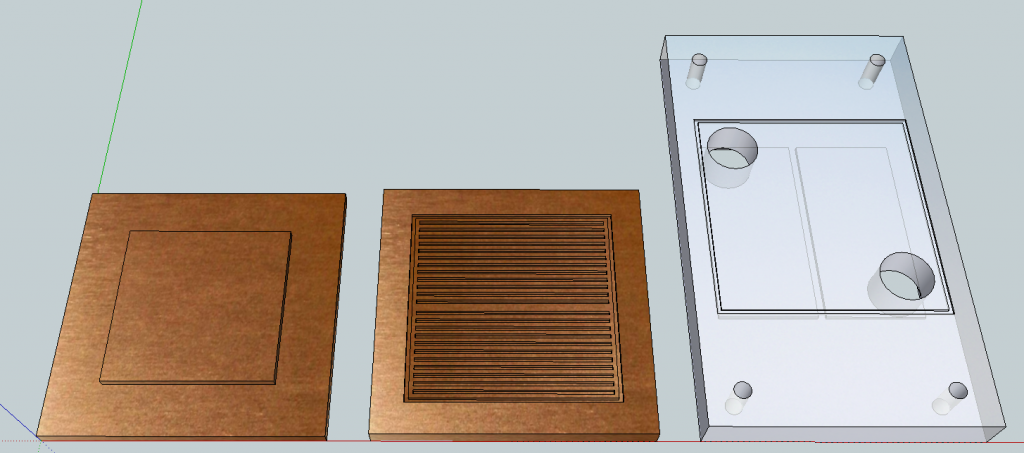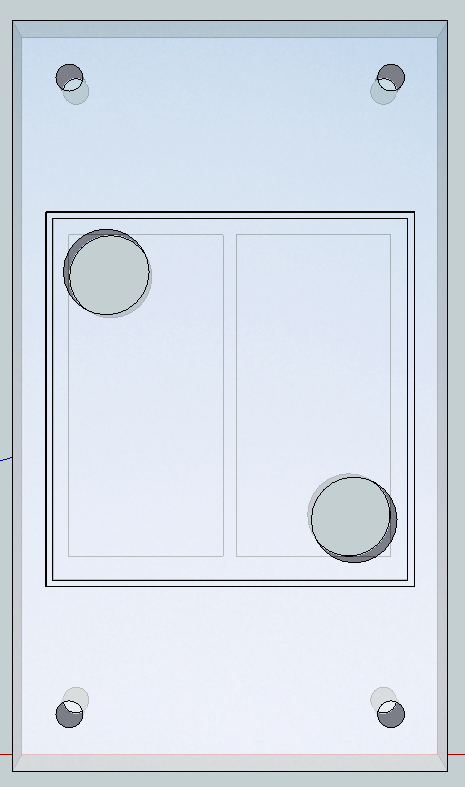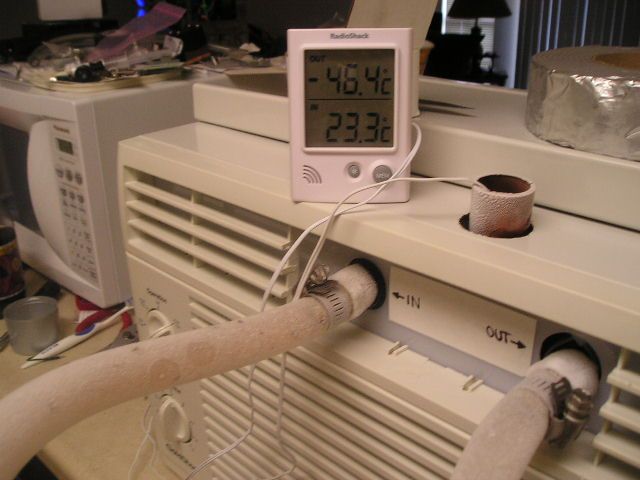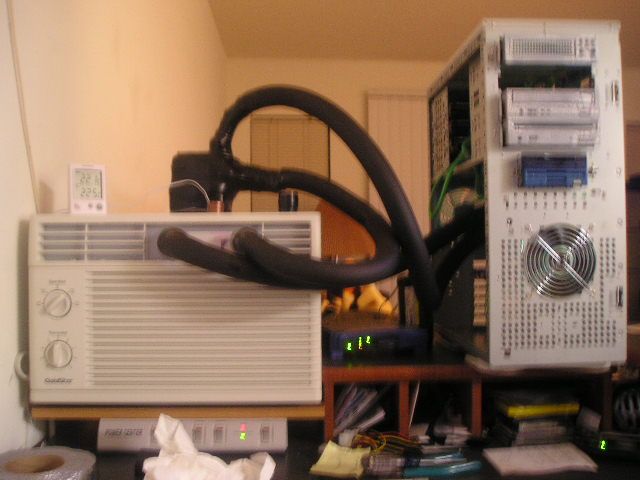So I was hoping that I could get some input from some of you guys on my waterblock design that I making to better utilize the power of my peltier and make it that bit more efficient. I'm tired so this thread will be quite quick and may have some typos.
So just some pictures of some Sketchup renders that I have done

The channels of the waterblock section are 1mm wide and 1mm high with a 1mm wall between each. Im not sure there is enough turbulence with just channels but I'll get to that later.

The two copper plates are 5mm thick and the plexi glass that I am using is 10mm which arrived today although I still need to find some copper with 5mm of thickness.

This is the top of the plexi block that will have 2 chambers, 1 for in and one for out. the water will go in one side, be pushed under the un milled out piece of plexi and then come out the other side after being pushed under the fins and go out the other tube. It is shown here in foxrena's block design http://www.overclock.net/g/i/117112...770k-on-cascade-tec-block/sort/display_order/.
Foxrena's final product

My render of the block top

Any opinions are welcome as long as they aren't to tell me that using a peltier is dumb . Im sure youll be able to help me but if you think this design will be adequate then I can get it cut in the next few weeks
. Im sure youll be able to help me but if you think this design will be adequate then I can get it cut in the next few weeks  .
.
Thanks, Joe.
So just some pictures of some Sketchup renders that I have done

The channels of the waterblock section are 1mm wide and 1mm high with a 1mm wall between each. Im not sure there is enough turbulence with just channels but I'll get to that later.

The two copper plates are 5mm thick and the plexi glass that I am using is 10mm which arrived today although I still need to find some copper with 5mm of thickness.

This is the top of the plexi block that will have 2 chambers, 1 for in and one for out. the water will go in one side, be pushed under the un milled out piece of plexi and then come out the other side after being pushed under the fins and go out the other tube. It is shown here in foxrena's block design http://www.overclock.net/g/i/117112...770k-on-cascade-tec-block/sort/display_order/.
Foxrena's final product

My render of the block top

Any opinions are welcome as long as they aren't to tell me that using a peltier is dumb
Thanks, Joe.


